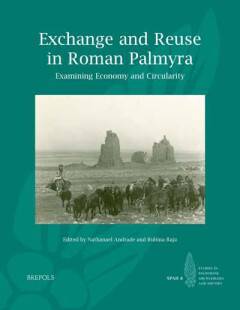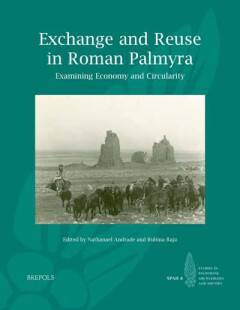
- Afhalen na 1 uur in een winkel met voorraad
- Gratis thuislevering in België vanaf € 30
- Ruim aanbod met 7 miljoen producten
- Afhalen na 1 uur in een winkel met voorraad
- Gratis thuislevering in België vanaf € 30
- Ruim aanbod met 7 miljoen producten
Zoeken
Exchange and Reuse in Roman Palmyra
Examining Economy and Circularity
Nathanael Andrade
Paperback | Engels
€ 79,50
+ 159 punten
Omschrijving
How did ancient cities like Palmyra survive? How did their people produce and manage the resources required for both their short - and long-term needs? Were their methods circular or wasteful? What materials did they reuse, and how? What form did their routine exchanges take? The material culture of Palmyra offers unique potential for addressing these questions in a concrete way. While the city is most famous for its long-distance commerce, a century of excavations at the site, together with a series of recent print publications and digital enterprises, have provided scholars with unprecedented amounts of material objects, among them inscriptions, statues, tesserae, coins, glass and metal finds, textiles, and other objects, all of which shed new light on Palmyra's economy and how its inhabitants consumed, maintained, exchanged, or reused key resources. Drawing together contributions from leading researchers on ancient Palmyra, this volume explores various dimensions of the city's economy from fresh angles. The chapters gathered here feature new methodologies for determining the size of Palmyra's population and for understanding the nature of coins in local exchanges, offer reassessments of the Palmyrene institutions that underpinned economic exchange, examine how Palmyrenes used and reused materials, and consider the forms of exchange and reuse that governed the building activity of Palmyrenes after the city's Roman heyday and within areas of Egypt.
Specificaties
Betrokkenen
- Auteur(s):
- Uitgeverij:
Inhoud
- Aantal bladzijden:
- 132
- Taal:
- Engels
Eigenschappen
- Productcode (EAN):
- 9782503603421
- Verschijningsdatum:
- 25/05/2023
- Uitvoering:
- Paperback
- Formaat:
- Trade paperback (VS)
- Gewicht:
- 689 g

Alleen bij Standaard Boekhandel
+ 159 punten op je klantenkaart van Standaard Boekhandel
Beoordelingen
We publiceren alleen reviews die voldoen aan de voorwaarden voor reviews. Bekijk onze voorwaarden voor reviews.











